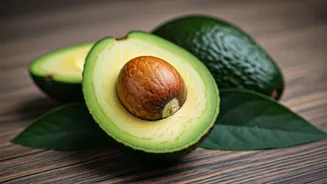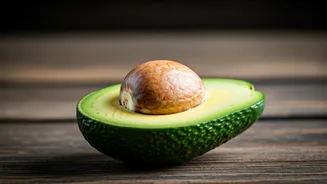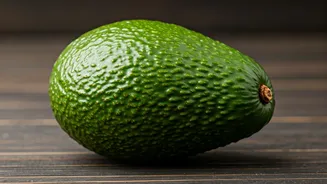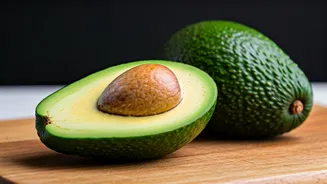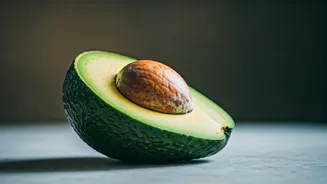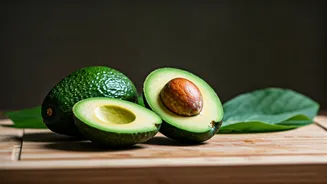Skin Deep Secrets
The exterior of an avocado holds significant clues about its readiness. Color is a primary indicator. Generally, the darker the skin, the riper the avocado.
However, this varies depending on the variety. Hass avocados, for example, turn from green to nearly black as they ripen. Other varieties maintain a green hue even when ripe. Feel is crucial; gently press the avocado near the stem. If it yields slightly, it’s likely ready. Avoid avocados that feel overly soft or have deep indentations, as these may be overripe or bruised. Inspect the skin for any blemishes or bruises, which might suggest internal damage.
The Stem Test
Another reliable method involves examining the stem. Remove the small stem cap at the top of the avocado. The color underneath reveals the fruit's ripeness. If the stem comes off easily and the area beneath is green, the avocado is ready to eat. A brown color indicates it's overripe, while a stubborn stem suggests it's not yet ripe. This method provides a quick and accurate assessment without having to cut into the fruit. This simple test is a crucial step in ensuring you select an avocado that is just right.
Gentle Squeeze Approach
Employing the squeeze test is an effective way to gauge the avocado's readiness, but it is important to apply it with care. Hold the avocado in your palm and gently squeeze. A ripe avocado should give slightly to pressure, but not be mushy. This indicates that the flesh has softened and is ready to be eaten. Be aware of applying too much pressure. Excessive squeezing can bruise the fruit, leading to uneven ripening or spoilage. Aim for a gentle touch that allows you to feel the internal texture without damaging the outer surface of the avocado.
Variety Matters
Recognizing different avocado types is crucial, as their ripening signs can vary. The Hass avocado is the most common, known for turning dark green to black when ready. Other varieties like Fuerte and Bacon may remain green even when ripe. Understanding this distinction avoids confusion and ensures you assess each avocado type appropriately. Familiarizing yourself with the nuances of each variety increases your chances of selecting perfectly ripe avocados. Always consider the specific characteristics of the variety when using the color and feel methods.
Avoiding Pitfalls
Avoiding common mistakes can greatly improve your avocado selection process. Avoid avocados with deep bruises, indentations, or punctures, as these indicate potential internal damage and spoilage. Do not buy avocados that feel excessively soft, as they are likely overripe and may have an unpleasant texture. Choose avocados with smooth, blemish-free skin whenever possible. When purchasing, consider the time frame you plan to consume the avocados. If using them immediately, select ripe ones; if not, opt for firmer avocados that will ripen over a few days. Proper storage and handling are key to the experience.
Ripening at Home
If you purchase unripe avocados, ripening them at home is straightforward. Place them in a paper bag with a banana or apple. These fruits release ethylene gas, accelerating the ripening process. The enclosed environment helps speed up the softening. Check the avocados daily for ripeness by gently squeezing them and checking the stem. Once they yield to gentle pressure and the stem comes off easily, they are ready to eat. Avoid the temptation to use a microwave to ripen them quickly, as this method often results in uneven softening and undesirable texture changes.
Storage Solutions
Proper storage is essential to keep ripe avocados at their best. Ripe avocados can be stored in the refrigerator for a few days to slow down the ripening. This prevents them from becoming overripe quickly. Once cut, leftover avocado should be stored properly to prevent browning. To do this, place the avocado half, cut-side down, in a container with a piece of plastic wrap pressed directly onto the flesh. You can also sprinkle lemon juice on the cut surface to slow down oxidation. This prevents discoloration and helps maintain their freshness and flavor. Applying these simple storage strategies will maximize the usefulness of your avocados.


